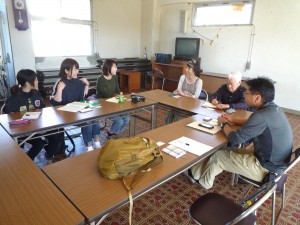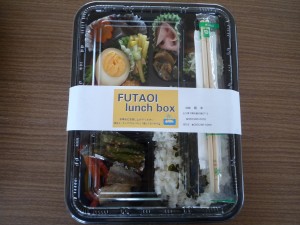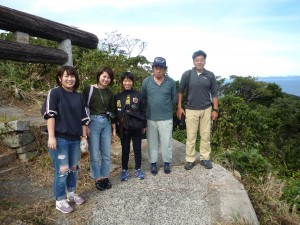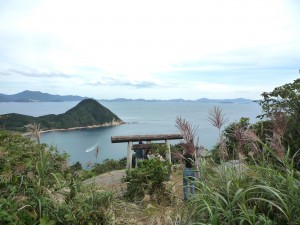- Home
- Students of joint independent research in the fall semester of 2018 conducted a fieldwork survey on Futaoijima, Shimonoseki City.
Shimonoseki City University
TOPICS
Topics
#Community ActivitiesStudents of joint independent research in the fall semester of 2018 conducted a fieldwork survey on Futaoijima, Shimonoseki City.
On October 14, 2018 (Sunday), three student groups and one supervisor of the joint independent research for the fall semester of 2018 conducted a fieldwork survey on Futaoijima, Shimonoseki City on the theme of "Consideration of Sustainability of Remote Island in a Declining Population Society".
Futaoijima is an island floating in the Hibiki Nada, about 6 km northwest of Yoshimo, Shimonoseki City, and has long been interacting with Kyushu and continents as a key point of maritime traffic. A liner is operated from Yoshimi Fishing Port in Shimonoseki City, and it takes about 40 minutes. The area is 2.32km2 and the population is about 90, but the elementary school in Shimauchi is also maintained, and the voices of the children are lively.
This time, under the participation and cooperation of the staff of the Shimonoseki City Board of Education Cultural Property Protection Division, in the morning, the former self-government chairman of the residents' association of Futaoijima and migrants to the island where they are ceramic artists We talked to people in various fields such as life, society, economy and industry of the island. In the afternoon, as a traditional event on Futaoijima, it has been held once every six years in the forest of Yamanokami before the Edo period, once every six years of the year of the dragon and the year of the dog. We were invited to a strict place related to "Yamanokami Shinto ritual" which is also a nationally designated important folk cultural property. We were able to hear many valuable stories on site and learn directly about the area.
One of the objectives of this fieldwork survey was for voluntary research and learning by students, but there was another. As the traditional event Yamanokami Shinto ritual will be held on November 24 and 25 this year, the Cultural Property Protection Division of the city decided to explore the possibility of student involvement in community development in order to preserve records as cultural properties. The students also strengthened their desire not only to conduct surveys, but also to cooperate in some way to create communities and maintain local culture.
(Professor MIZUTANI Riaki, Department of Public Management)
- Interview survey with former self-government chairman and immigrant ceramic artists
- Lunch on the island that I requested by reservation up to the day before
- One of the strict forests of Yamanokami
- Emu's breeding place
- A commemorative photo at the summit of Mount Kompira where migrants take a nap
- See the mainland side of Shimonoseki from the top of Mt. Konpira













